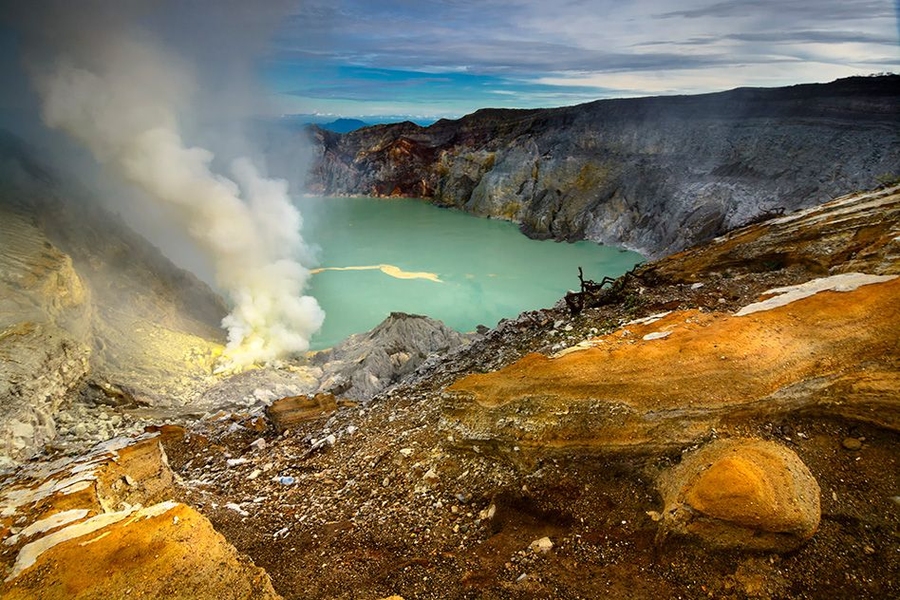Building Blocks of Life: Crucial Molecule Formed in Early Earth Experiment
Share IT

Launch Your Dream Website with Us!
Click Here to Get in touch with Us.
Categories
Early Earth Life Molecule Synthesis
Cracking the Code of the Formation of a Vital Life Molecule on Early Earth: From Precursor Soup to Living Organisms
One of science’s most enthralling and persistent mysteries is the origin of life on Earth. It’s a challenging jigsaw to piece together how the complicated dance of chemical reactions resulted in the creation of the first living things, and every new finding adds significance to the overall picture. In this fascinating discovery, scientists have successfully created pantetheine, a chemical essential to life, in an environment akin to that of the early Earth. This ground-breaking discovery clarifies whether the components of life may have formed spontaneously on Earth billions of years ago.
Table of Contents

Interpreting the Significance of Pantetheine.
Early Earth Life Molecule Synthesis
Pantetheine, although not well recognized to the general public, is an essential component of all living things. It serves as the active ingredient in acetyl coenzyme A, or acetyl CoA, a chemical necessary for a number of biological processes, such as:
- Energy Metabolism: Acetyl CoA is essential for the breakdown of fats and carbs into energy, which powers the cellular functions that sustain living things.
- Fatty Acid Synthesis: It’s a building block that helps make fats, which are necessary for cell membranes and act as stores of energy.
- Acetyl: CoA also aids in the synthesis of amino acids, which are essential for the maintenance of many cellular structures and functions. Amino acids are the basic building blocks of proteins.
- Consequently: the fact that pantetheine can be synthesized in environments that resemble those of early Earth suggests that the elements necessary for life’s basic functions may have been present on Earth naturally, opening the door for the emergence of more complex biomolecules and life itself.
Replicate History: Emulation of the Pre-Earth Environment
Early Earth Life Molecule Synthesis
By reproducing in a controlled laboratory environment the circumstances thought to have existed on the early Earth, scientists were able to accomplish this amazing achievement. They used a combination of simple chemicals, which are assumed to have been prevalent in the early Earth’s atmosphere, such as water, ammonia, and methane. After that, these compounds were exposed to electrical discharges and UV light, simulating the energy sources that were probably common on the Earth billions of years ago. The circumstances required for the spontaneous reactions that eventually resulted in the production of pantetheine were supplied by this artificial environment.
Early Earth Life Molecule Synthesis
A Peep into the Chemistry of the Beginnings of Life
Early Earth Life Molecule Synthesis
The following noteworthy implications of this successful experiment for our comprehension of the origins of life on Earth:
- Strengthening the Prebiotic Soup Theory: This discovery adds credence to the prebiotic soup theory, which postulates that a varied mixture of organic molecules existed in the early Earth’s atmosphere and oceans, acting as the primordial soup from which life eventually evolved.
- Extending the Scope of the Search: Researchers can now concentrate their efforts on determining the origins of other critical chemicals required for life, significantly enhancing our understanding of the intricate pathways that led to the advent of life, after proving the natural production of pantetheine under conditions akin to those of replicated early Earth.
- All-encompassing Relevance: There may be uses for this discovery outside of Earth. It opens up the potential that life exists elsewhere in the universe and broadens the search for extrasolar life if comparable processes may take place on other planets with favorable conditions.
Early Earth Life Molecule Synthesis
Beyond the Breakthrough: Crucial Points to Remember
Early Earth Life Molecule Synthesis
Even while this finding adds much to our understanding of the beginnings of life, it’s important to recognize some limits and current research areas:
- One component of the Complex jigsaw: The origin of life is a complex jigsaw, and this research is only one component of it. To get the full picture, more research is needed to clarify a number of other important components and processes.
- Limitations of the Laboratory Setting: A simplified representation of the early Earth’s environment was replicated in the experiment. The settings in the real world were probably more varied and complicated, involving a range of elements that could have affected the development of distinct biomolecules.
- Encouraging Additional Research: This discovery opens up new avenues for investigation, pushing scientists to learn more about the complex chemistry that gave rise to life on Earth and maybe elsewhere.
In summary: Revealing the Mysteries of the Origins of Life
Early Earth Life Molecule Synthesis
The probability of life emerging naturally on our planet is strengthened by the successful synthesis of pantetheine in conditions resembling those of early Earth. It provides fresh lines of inquiry and may lead to the expansion of the hunt for life outside of our solar system. It also advances our understanding of the complex chemical processes that gave rise to the first living things. We could eventually be able to completely understand the incredible journey that led to the development of life on our planet and possibly discover similar dramas occurring on distant worlds as science continues to reveal the mysteries hidden within the chemical history of early Earth.

Launch Your Dream Website with Us!
Click Here to Get in touch with Us.





























































Recent Comments